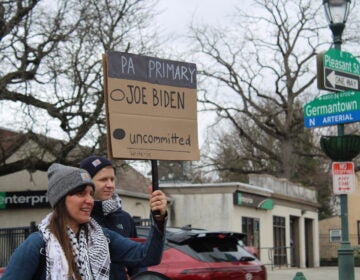Wissahickon civic delays vote on proposal to convert vacant factory site into Main Street apartments
An idle building in Manayunk will likely stay that way for at least another month.
On Monday night, members of the Wissahickon Neighbors Civic Association decided to delay a vote on a project that could transform the dormant Wilde Yarns Factory on the 3700 block of Main St. into almost 50 apartments.
Under a plan presented by developer Scott Janzen and architect Peter Bloomfield, the site’s current three buildings would be transformed into 45 studio, one-bedroom, and two-bedroom apartments. A fourth structure would be constructed to serve as a link between the buildings.
Under the design as presented, 41 parking spaces were included, with the developers expressing interest in incorporating a car share firm into the resultant development.
At present, the site is zoned for limited industrial use, and the developers need a variance to begin work.
“We see this as the southern gateway to Manayunk,” said Janzen. “It’s pretty prominent and hopefully we’ll do something good with it.”
The proposal
Under the proposal, the former Wilde Factory would become host to three studio apartments, 27 one-bedroom apartments, and 15 two-bedroom apartments. The estimated rental fees would be approximately $1,300 for the one-bedrooms, and $1,800 for the two-bedrooms, which the developers indicated would appeal to a young professional demographic, not to the student rental market.
Parking would be included in the base rent on a “first come, first served” basis, although the developers suggested that due to the site’s proximity to both the Wissahickon train stop and Bus Transportation Station, some prospective residents would not have cars. Nevertheless, there are 41 spaces allocated within the site, and another 12 estimated as being available on Main Street.
According to documents provided by the developers, the three buildings date back as early as 1884, with the second and third being built in 1932 and 1984. All are seemingly carved into the face of the hill that Ridge Avenue sits atop of.
For more than a hundred years, the Wilde Factory produced carpet yarns, but with direct competition from both foreign and domestic rivals, production at the factory began diminishing in the 1990s, with the final employees being released in the last few years.
Janzen estimated that talks about acquiring the property began approximately four years ago, with the purchase finally settled in June of 2012 for $812,200, according to city records.
Windows and other fixtures, bound by the strictures of the National Historic Registry, will be restored to their industrial-age specifications, and the developers said the landscaping will be conducted in a way that displays the rock into which the buildings are built.
While the buildings are seemingly buffered from adjacent neighborhoods – Ridge Ave. and SEPTA’s Manayunk/Norristown line form the eastern boundaries – Bloomfield remarked that on projects he often asks himself, “Where are the things that are going to be annoying to the neighbors?”
In this instance, he related that HVAC systems and trash receptacles will have a minimal footprint.
Parking concerns
However, despite this gesture, Janzen and Bloomfield received some opprobrium from WNCA’s membership in regard to the parking proposal, with one resident saying, “You missed the boat on parking.”
The area within WNCA’s boundaries has endured a difficult parking situation for years, and residents voiced concern that the number of dedicated parking spaces was less than the amount of apartments – let alone occupancy – thus impacting off-site parking for neighbors, who are sometimes forced to park as far away as Main St.
In addition, two hypothesis set forth by Bloomfield – that some residents would not have cars, and that overflow parking on Main St. would not only absorb parking but slow down traffic – were not well-received by some of the residents.
Holding off on a vote
While the new Philadelphia Zoning Code is the law of the land, as the design for this project was filed before its August implementation date, this project will be governed by the older guidelines.
In a discussion among residents following the presentation, WNCA President Drew Bantly observed that this is a situation where requests can be made, noting that the developers own the building outright, and that the project is not contingent upon an immediate vote.
In addition, residents raised the question of asking for benefits to the community from the developers, especially with regard to assistance with Neighbors Park, which in light of cost overruns is receiving an additional $50,000 in capital funding and $1,000 in activities funding from Fourth District Councilman Curtis Jones, Jr.
Janzen and Bloomfield indicated amenability to the suggestion at the meeting.
Before the next vote, presumably in November, Bantly will seek to secure a one to one ratio for parking versus apartments and will discuss community benefits with the developers, who signaled understanding after the meeting.
“We appreciate that the members did not force a vote,” said Janzen. “It’s another opportunity to look at the plans and see what we can do.”
WHYY is your source for fact-based, in-depth journalism and information. As a nonprofit organization, we rely on financial support from readers like you. Please give today.




